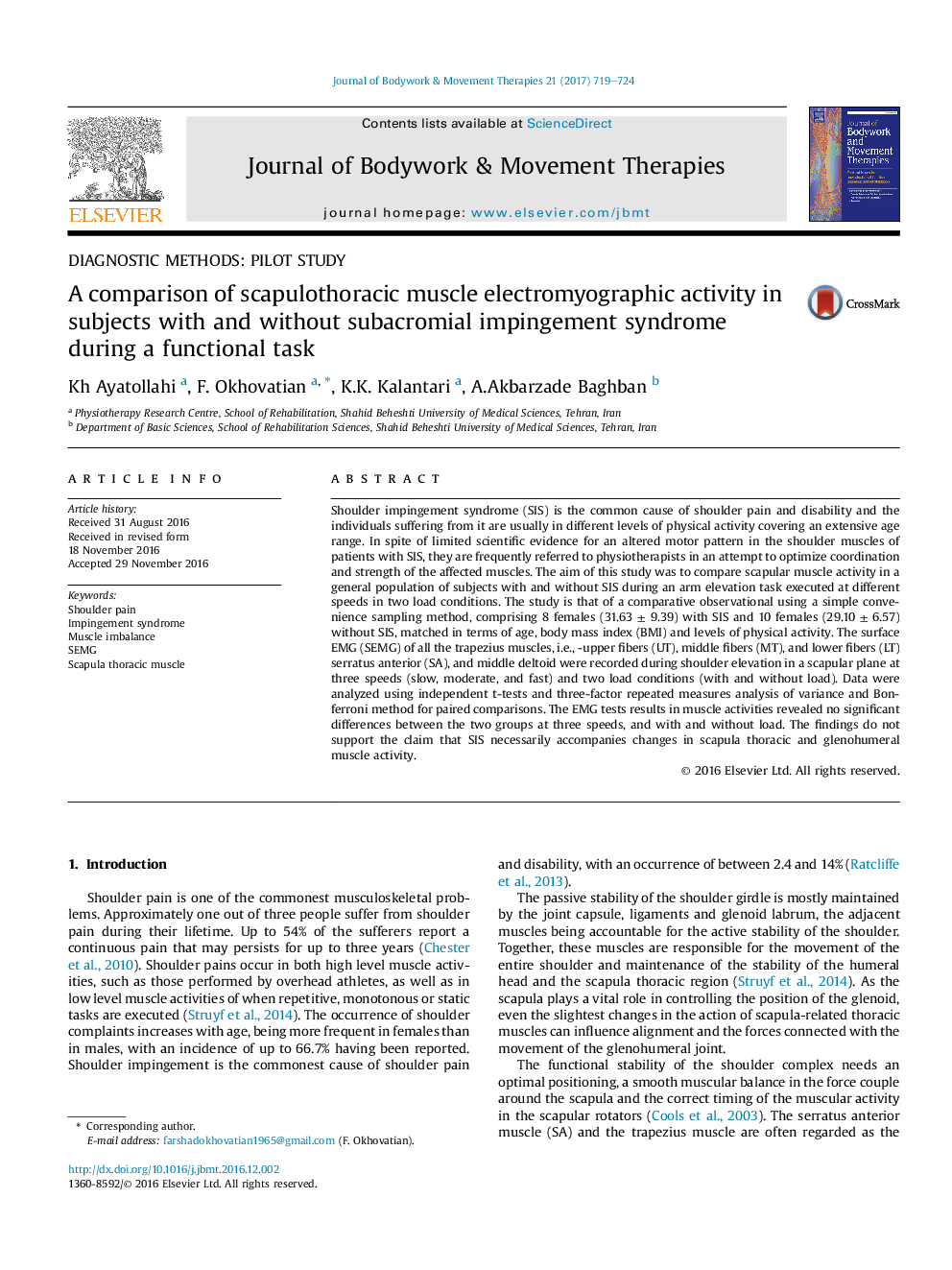| Article ID | Journal | Published Year | Pages | File Type |
|---|---|---|---|---|
| 5564040 | Journal of Bodywork and Movement Therapies | 2017 | 6 Pages |
Shoulder impingement syndrome (SIS) is the common cause of shoulder pain and disability and the individuals suffering from it are usually in different levels of physical activity covering an extensive age range. In spite of limited scientific evidence for an altered motor pattern in the shoulder muscles of patients with SIS, they are frequently referred to physiotherapists in an attempt to optimize coordination and strength of the affected muscles. The aim of this study was to compare scapular muscle activity in a general population of subjects with and without SIS during an arm elevation task executed at different speeds in two load conditions. The study is that of a comparative observational using a simple convenience sampling method, comprising 8 females (31.63 ± 9.39) with SIS and 10 females (29.10 ± 6.57) without SIS, matched in terms of age, body mass index (BMI) and levels of physical activity. The surface EMG (SEMG) of all the trapezius muscles, i.e., -upper fibers (UT), middle fibers (MT), and lower fibers (LT) serratus anterior (SA), and middle deltoid were recorded during shoulder elevation in a scapular plane at three speeds (slow, moderate, and fast) and two load conditions (with and without load). Data were analyzed using independent t-tests and three-factor repeated measures analysis of variance and Bonferroni method for paired comparisons. The EMG tests results in muscle activities revealed no significant differences between the two groups at three speeds, and with and without load. The findings do not support the claim that SIS necessarily accompanies changes in scapula thoracic and glenohumeral muscle activity.
